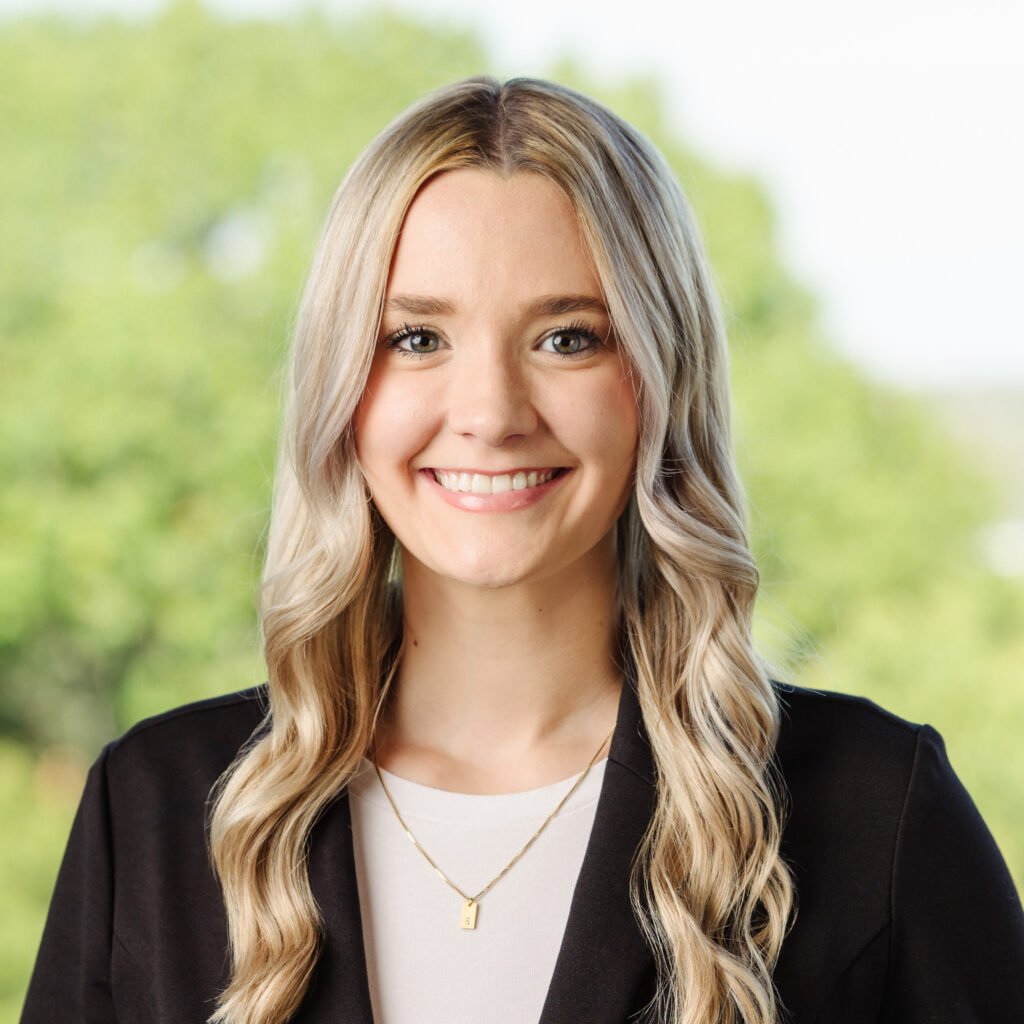At Waldron Private Wealth, we partner with individuals and families focusing on:
- Business venturers, asset gatherers and career professionals whose focus is on wealth accumulation and family protection
- Pre-retirees planning for a secure retirement lifestyle
- Retirees whose focus is on wealth preservation and building a family legacy
- Widowers who are seeking assistance with post-loss financial duties
No matter the stage of life, achieving a balanced financial perspective between current and future needs requires coordination. Without a trusted wealth advisor working in unison with your other financial experts (accountant, attorney, insurance agent, etc.), managing wealth can become disjointed and time-consuming, potentially leading to future regrets.
Below, we outline five considerations to address the question at hand, plus an additional set of insights. If you’d like to explore these further, our wealth advisor team is here to provide tailored guidance to both your current and future needs. Please contact us for a personalized strategy session.
- Coordination between my Financial Professionals
- Your team may not be on the same page with another – I’m a passionate NFL fan and few things grind my gears more on a fall Sunday afternoon than seeing an avoidable but costly penalty resulting from a simple lack of communication. Just like on the football field, those penalized yards can accumulate and move the needle for your financial picture. One may have a professional team in place today, but if there’s a lack of coordination it can lead to inefficiencies and costly financial decision making for the “current and future you”.
- Example: You paid more in income tax and for Medicare than intended – If your portfolio manager incurs a significant amount of capital gains as part of their normal rebalancing, while your accountant separately recommends that you convert an amount of your Traditional IRA to your Roth IRA creating taxable income – this may unintentionally move you up into a higher Federal marginal income tax bracket while also leading to a potentially higher Medicare Part B and D premium down the road per what is called IRMAA tax brackets (source: Kiplinger).
- Save versus Spend
- Budgeting doesn’t have to be taboo – Budgeting may have a negative connotation for some individuals. For others, it can provide a sense of comfort. We find that some individuals may know what their income is today, but don’t necessarily track what they’re spending (and that’s understandable). We help our clients with budget planning from high-level summaries to granular breakdowns, driven by your preferences to balance saving for the “future you” with not necessarily taking away from life enjoyment today.
- Using budgeting as a tool – Projecting the long-term implications of save versus spend, as well as for desired “big ticket” purchases such as funding for a new home, launching a business venture or covering your child’s wedding costs, is a valuable tool to address the title question above and help ensure those “investments” don’t veer you off path.
- Pre- and Post-Life Planning
- Proactive estate planning – We work with our clients to understand what it is that is most important for them, in terms of developing an estate plan designed for financial protection and legacy building for their family and other heirs. As an example for parents with young children, establishing guardianship and trust accounts that can be designed with specific age-break provisions and delegation to trustees until minors reach adulthood can help direct traffic and clarity when it’s needed the most.
- Post-life planning duties – We view ourselves as being a supporting partner for surviving spouses in the post-life planning process, so that they may focus their time and energy on their loved ones. A timely and coordinated effort is essential in our opinion during the post-life planning process across your various professional experts.
- Aligning your Asset Allocation with your Cash Flow Needs
- There’s been a recent shift between equity and bond returns – In 2024, broad U.S. equities gained +23.8% while U.S. tax-exempt bonds gained +1.1%. For 2025 through March 7th, U.S. tax-exempt bonds are up +1.0% while U.S. equities are down -2.1%. Pockets of U.S. equity markets are down even more, such as U.S. large cap equity growth at -5.6% and U.S. small cap equities at -6.8% (sources: Morningstar, Russell 3000 Index, Barclays Municipal Bond Index, Russell 1000 Growth Index, Russell 2000 Index).
- Income generating versus long-term growth assets – While U.S. equities are trailing U.S. bonds this year (as of the writing of this commentary), it’s important to note that U.S. equities have provided an annualized return that is over double that of U.S. bonds since 1950. Also, there has historically never been a negative 20-year rolling annualized return for U.S. equities or U.S. bonds over this time frame (there’s a potential long-term reward for owning high risk assets). However, over the past 30+ years U.S. equities have been positive in approximately 75% of those calendar years while U.S. bonds have been positive in approximately 90% of those calendar years. For investors looking for tax-efficient income generation from their portfolio, current U.S. tax-exempt bond yields are at their highest level versus the past 15+ years (about 1%+ above the average over that time frame). Point being, the “current you” and the “future you” may require different asset allocation mixes between these major asset classes and your portfolio should be periodically evaluated in line with your cash flow needs. This can help mitigate temporary equity market fluctuations from derailing the “future you” plans (sources: J.P. Morgan Asset Management, Nuveen).
- Building a Tax-Free Bucket for Retirement
- The Roth account, a tax-free bucket – According to a study conducted by Russell Investments, investors may be losing up to -1.8% in portfolio returns per year due to income taxes. We believe that what your portfolio earns from an after-tax perspective is paramount and there are various strategies to mitigate this burden (prudent asset location, usage of tax-exempt bonds, the Roth account, etc.). The Roth account is a bucket that can be withdrawn during retirement income tax-free. Funding a Roth IRA can be done via direct contributions or backdoor Roth contributions (depending on your income level), contributing to a Roth 401(k), or by converting Traditional pre-tax IRA or 401(k) assets to the Roth form (source: Russell Investments).
- The “current you” pays the income tax now, while the “future you” enjoys the tax-free benefits – When converting assets from a Traditional IRA to Roth IRA, the income tax is paid in the current tax year. Or, when you make contributions to a Roth 401(k) instead of the Traditional 401(k) those deferrals are subject to income tax in the current tax year whereas the Traditional 401(k) deferrals would not be subject to income tax. For the backdoor Roth contribution, there is a nuanced pro-rata rule that should be evaluated. The added bonus here is that the Roth IRA or Roth 401(k) does not require you to make required minimum distributions, so you control the cadence later in life (unlike a Traditional IRA or Traditional 401(k) which does have that requirement once you’re in your 70’s) (source: Investopedia).
- Bonus – Funding for Self-Employed Income, Retirement, Health and Educational Expenses
- Tax Credits available for Self-Employed Retirement Funding – Solo 401(k), SEP IRA and SIMPLE IRA are common retirement plans utilized by self-employed individuals. There are several income tax credits available for starting up these plans that self-employed individuals should evaluate, including Federal income tax credits worth up to a total of $5k (source: Internal Revenue Service).
- “Super” catch-up contributions for 401(k), 403(b) and 457(b) Retirement Plans – New for 2025 and resulting from the Secure Act 2.0, individuals who will turn age 60 to 63 in 2025 can make an extra contribution to these retirement plans. Individuals age 50 and up can contribute the base amount permitted of $23,500 plus an additional $7,500 (a total of $31,000). For those whose age is between 60 and 63, they can contribute a total of $34,750 which is known as the “super” catch-up contribution (source: Lord Abbett).
- Don’t overlook the income tax savings of an HSA – Otherwise known as a health savings account, which can be used to cover medical expenses. There are requirements for a high- deductible health insurance plan to qualify and the annual maximum contribution is typically below $10k, while those aged 55 and up can contribute an additional $1k. You generally cannot use an HSA to cover Affordable Care Act health insurance premiums; however, it can cover payment of Medicare premiums. Contributions are made on a pre-tax basis, grow tax-free and can be withdrawn tax-free meeting certain requirements (source: Morgan Stanley).
- Funding my child or grandchild’s education – 529 plans are educational savings vehicles that can have triple tax benefits. Depending on your state of residence a portion of contributions can be state income tax deductible, assets grow tax-free and can be withdrawn tax-free if used for specific educational purposes. A portion of 529 plans can be used for certain K-12 expenses yearly even for private schooling and when meeting certain rules, can be transferred income tax and penalty free to the child’s Roth IRA to help catalyze their own retirement savings (this can help mitigate “over-funding” 529 plans). When a 529 plan is owned by a grandparent, those assets are not counted for FAFSA eligibility, which was a new rule as part of the 2024 FAFSA form update. UTMA’s are not as tax-efficient as 529 plans broadly speaking and are counted against FAFSA; however, this account type is less restricted in terms of future spending usage. When the child reaches their age of majority (18+ depending on the state of residence), a 529 plan is not owned typically by the child while the ownership of the UTMA would transfer to the child at the time of reaching their age of majority. A combination of the two can be an impactful tool when developing an educational savings plan and target funding level for your child or grandchild (source: savingforcollege.com).
Waldron Private Wealth (“Company”) is an SEC registered investment adviser with its principal place of business in the Commonwealth of Pennsylvania. Company may only transact business in those states in which it is registered, or qualifies for an exemption or exclusion from registration requirements. For information about the Firm’s registration status and business operations, please consult Waldron’s Form ADV disclosure documents, the most recent versions of which are available on the SEC’s Investment Adviser Public Disclosure website at www.adviserinfo.sec.gov.
This material is for informational purposes only and is not intended to be an offer, recommendation or solicitation to purchase or sell any security or product or to employ a specific investment strategy. Due to various factors, including changing market conditions, aforementioned information may no longer be reflective of current position(s) and/or recommendation(s). Moreover, no client or prospective client should assume that any such discussion serves as the receipt of, or a substitute for, personalized advice from Company, or from any other investment professional. Investing involves risk, including the potential loss of money invested. Past performance does not guarantee future results. Asset allocation and diversification do not guarantee a profit or protect against loss. Company is neither an attorney nor an accountant, and no portion of the web site content should be interpreted as legal, accounting or tax advice.







